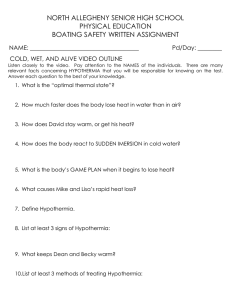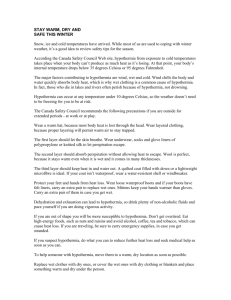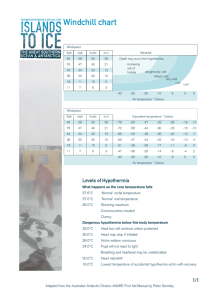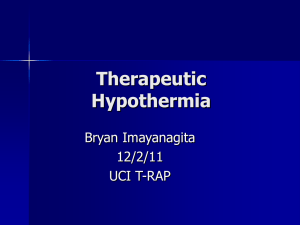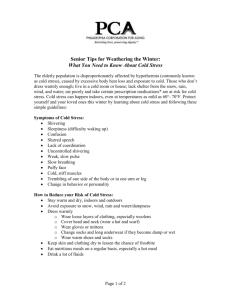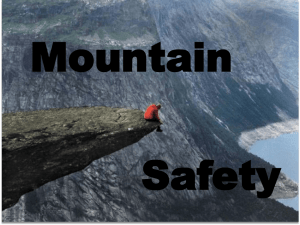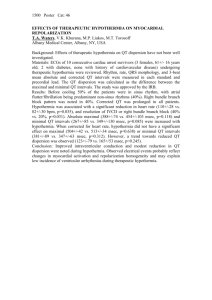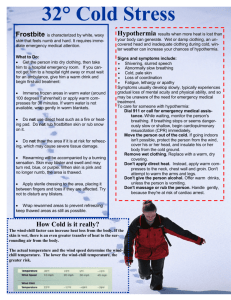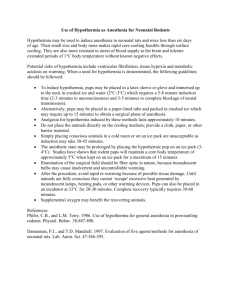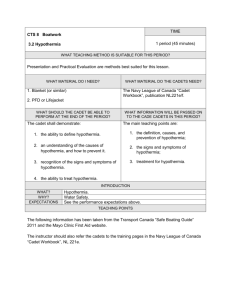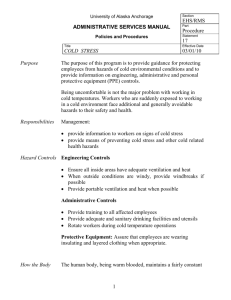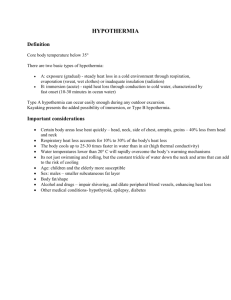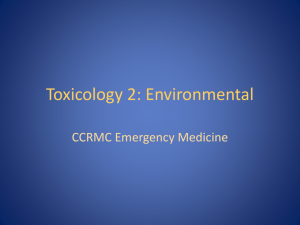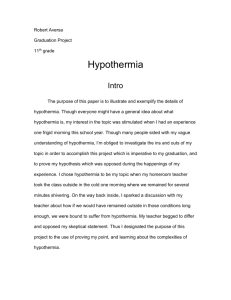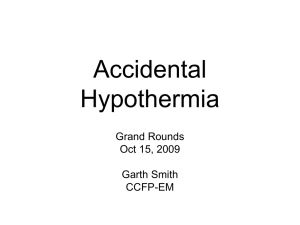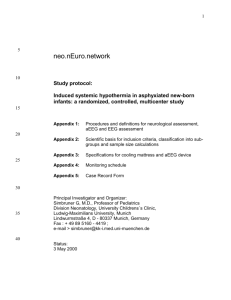Hypothermia: First aid - Kayak Fishing Addiction
advertisement
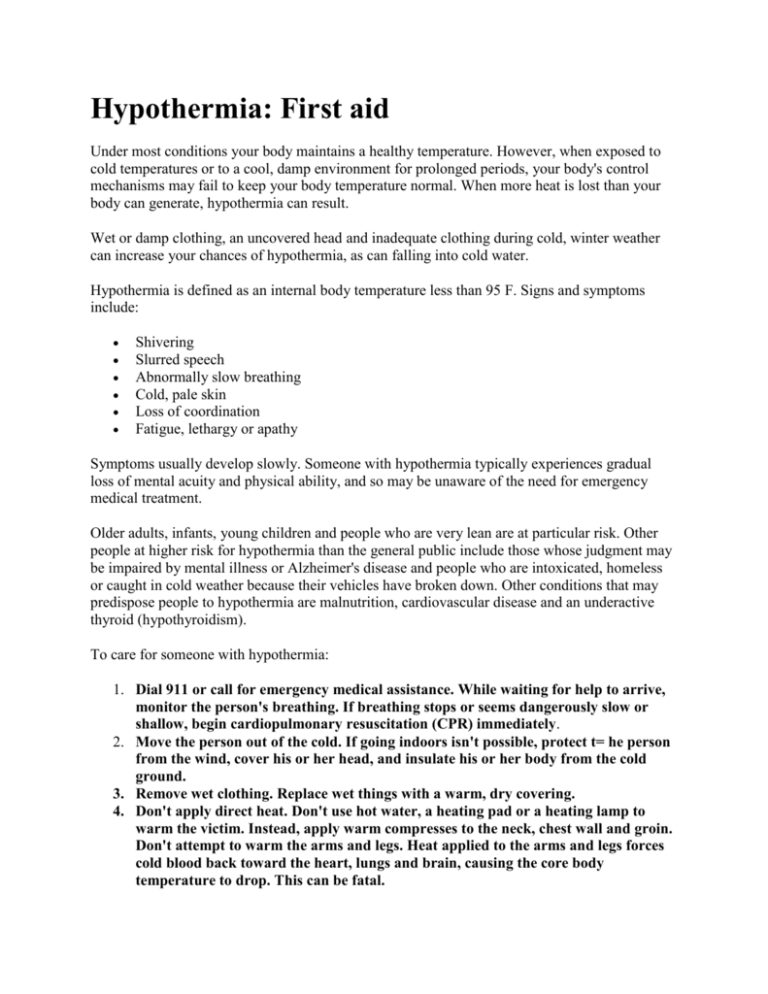
Hypothermia: First aid Under most conditions your body maintains a healthy temperature. However, when exposed to cold temperatures or to a cool, damp environment for prolonged periods, your body's control mechanisms may fail to keep your body temperature normal. When more heat is lost than your body can generate, hypothermia can result. Wet or damp clothing, an uncovered head and inadequate clothing during cold, winter weather can increase your chances of hypothermia, as can falling into cold water. Hypothermia is defined as an internal body temperature less than 95 F. Signs and symptoms include: Shivering Slurred speech Abnormally slow breathing Cold, pale skin Loss of coordination Fatigue, lethargy or apathy Symptoms usually develop slowly. Someone with hypothermia typically experiences gradual loss of mental acuity and physical ability, and so may be unaware of the need for emergency medical treatment. Older adults, infants, young children and people who are very lean are at particular risk. Other people at higher risk for hypothermia than the general public include those whose judgment may be impaired by mental illness or Alzheimer's disease and people who are intoxicated, homeless or caught in cold weather because their vehicles have broken down. Other conditions that may predispose people to hypothermia are malnutrition, cardiovascular disease and an underactive thyroid (hypothyroidism). To care for someone with hypothermia: 1. Dial 911 or call for emergency medical assistance. While waiting for help to arrive, monitor the person's breathing. If breathing stops or seems dangerously slow or shallow, begin cardiopulmonary resuscitation (CPR) immediately. 2. Move the person out of the cold. If going indoors isn't possible, protect t= he person from the wind, cover his or her head, and insulate his or her body from the cold ground. 3. Remove wet clothing. Replace wet things with a warm, dry covering. 4. Don't apply direct heat. Don't use hot water, a heating pad or a heating lamp to warm the victim. Instead, apply warm compresses to the neck, chest wall and groin. Don't attempt to warm the arms and legs. Heat applied to the arms and legs forces cold blood back toward the heart, lungs and brain, causing the core body temperature to drop. This can be fatal. 5. Don't give the person alcohol. Offer warm nonalcoholic drinks, unless the person is vomiting. 6. Don't massage or rub the person. Handle people with hypothermia gently, bec= ause they're at risk of cardiac arrest Cold shock response Myth of sudden hypothermia In humans, cold shock response is perhaps the most common cause of death from immersion in very cold water, such as by falling through thin ice. The cold water can cause heart attack (as cold blood from the extremities reaches the heart) and inhalation of water (and thus drowning) from hyperventilation. Some people, due to body type or mental conditioning, are much better able to survive swimming in very cold water. Hypothermia from exposure to cold water is not as sudden as is often believed. A person who survives the initial minute of trauma (after falling into icy water), can survive for at least thirty minutes provided they don't drown. However, the ability to perform useful work (for example to save oneself) declines substantially after 10 minutes (as the body protectively cuts off blood flow to "non-essential" muscles).
